The Best Manga of the 2010s
Celebrating a decade of sitcoms, superheroes, and shitbugs in Japanese comics.
Welcome to Ani-Gamers’ Best of the 2010s lists! For the past few months the staff here at Ani-Gamers has been putting together one big list for each of our three main categories (anime, manga, and video games), covering our favorite titles released between 2010 and 2019. These lists represent the combined rankings of three of our main staff — Evan Minto, Ink, and David Estrella — which is why we’re jettisoning the name that we use for our usual end-of-the-year rankings (“Staff Picks”) in favor of something more authoritative. This post covers just the manga; video game and anime posts are coming very soon!
Of course, these lists are far from exhaustive, since our contributors can only consume so much content, even in a full decade! For those who will no doubt be curious about why certain titles didn’t make the cut, here’s a quick summary of our methodology: each contributor provided a full ranked list of their favorite manga. Then each title was given a score based on how high it appeared on each contributor’s list, weighted a bit to compensate for various differences in the lists and to break ties. The following ranking represents the top 10 scoring titles on our combined list. The full list, including both our individual and collective rankings, is available $5+ patrons on the Ani-Gamers Patreon.
The titles covered here span a wide range of genres, as befitting the varied perspectives on display from our contributors. Some of them are smash hits that you’re no doubt familiar with, while others may have flown under the radar. Either way, we hope this list gives you a few more books to add to your reading list. Enjoy, and let us know your own picks in the comments!
10. Neon Genesis Evangelion (1994–2014)
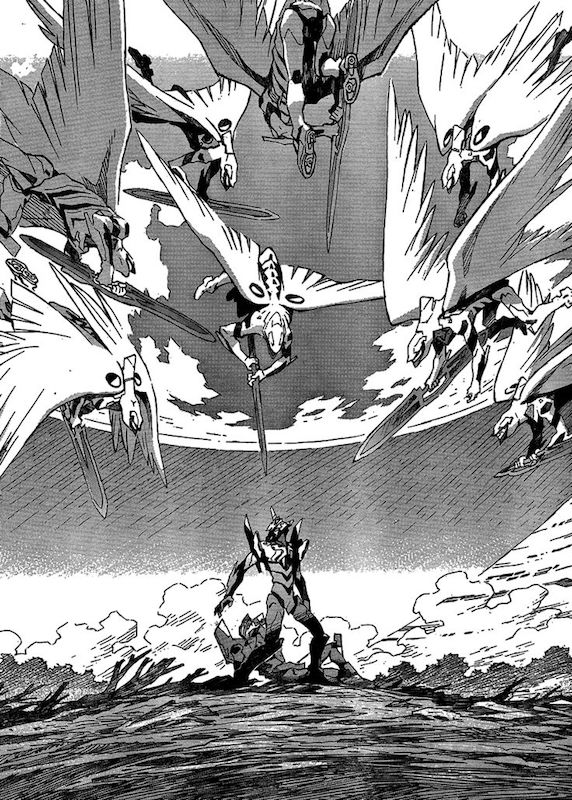
David Estrella: I’m tired of Evangelion but that doesn’t take away from Yoshiyuki Sadamoto’s manga adaptation of the inescapable anime phenomenon. The years separating each chapter offered Sadamoto frequent opportunities to fine-tune much of the core script from the original TV series and even create a new ending separate from the contentious End of Evangelion. Sadamoto has a great eye for design and action so despite how weary I am of talking about the series, I do have to recognize that talent and effort that went into making an adaptation of the most vital work in the history of Japanese animation.
9. Golden Kamuy (2014–present)

Evan Minto: The anime adaptation may not have been blessed with a great production, but the Golden Kamuy manga is one of the best new series of the 2010s. Equal parts Guy Ritchie movie, survival epic, cooking manga, and historical textbook, this series is the gift that keeps on giving. The specificity of its research brings the snowy wilderness of early 20th-century Hokkaido to life and serves as a beautifully reverent introduction to the culture of Japan’s indigenous Ainu people. Plus it’s full of swashbuckling action sequences and literal mustache-twirling villains. Something for everyone!
8. Soredemo Machi wa Mawatteiru (2005–2016)
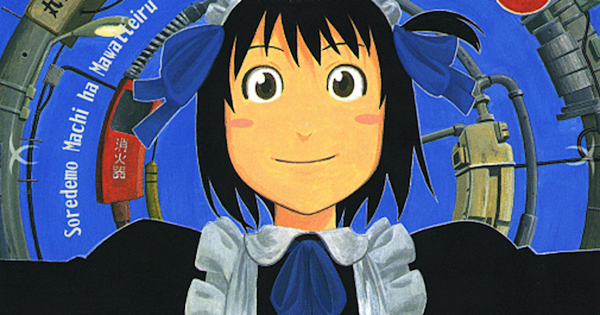
Evan Minto: Soredemo Machi wa Mawatteiru (And Yet the Town Moves) wrapped up its over 10-year run in 2016, much to my chagrin. This endlessly charming sitcom nails a balance between absurdism and naturalistic comedy that few manga comedies pull off. And like all the best sitcoms, over time the story expands from its core characters to focus on a community of interlocked stories. To its credit, the series never gets too sentimental; Masakazu Ishiguro is always ready with a joke to knock you off balance. That didn’t stop me from getting glassy-eyed when I eventually had to say goodbye to these goofy kids.
7. Descending Stories: Showa Genroku Rakugo Shinju (2010–2016)
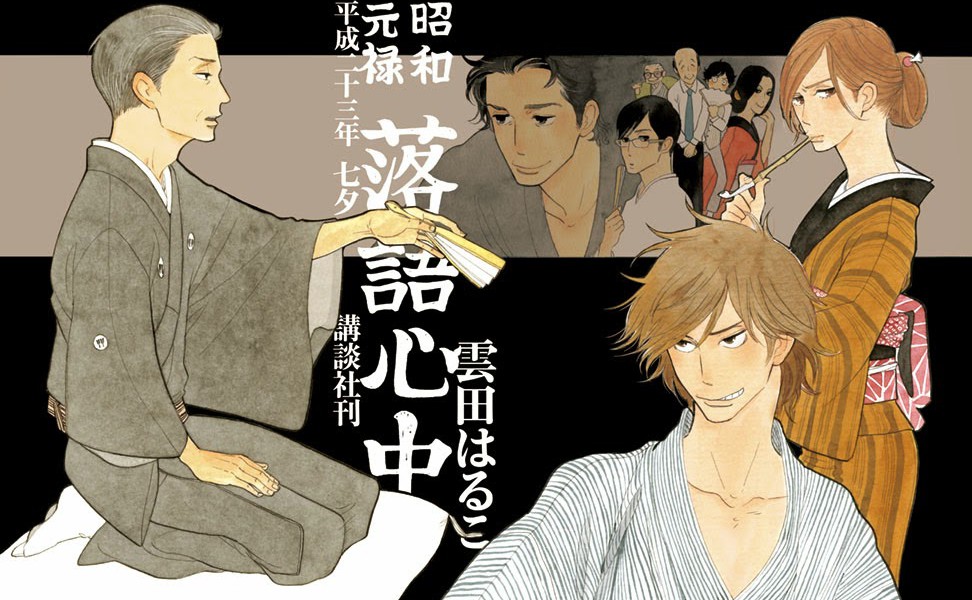
Ink: Even though the anime adaptation of Haruko Kumota’s fictional drama revolving around rakugo’s Singin’ in the Rain moment more adeptly conveys (visually) layers of metaphor and cultural impact by interweaving performance with all associated aspects thereof, the progenitor’s the heart whose pulses give birth to that body. The Rakugo Shinju manga has some unfortunate tells if you’ve watched the anime first, but the character designs and art and story are ultimately worthwhile if coming to the origin via the successor. Kumota also has a seriously enthralling talent for Romantic settings as well as facial expressions and body language that almost make the anime feel fanservicey in their collective poise (grown Konatsu notwithstanding but highly appreciated).
6. Chainsaw Man (2018–present)
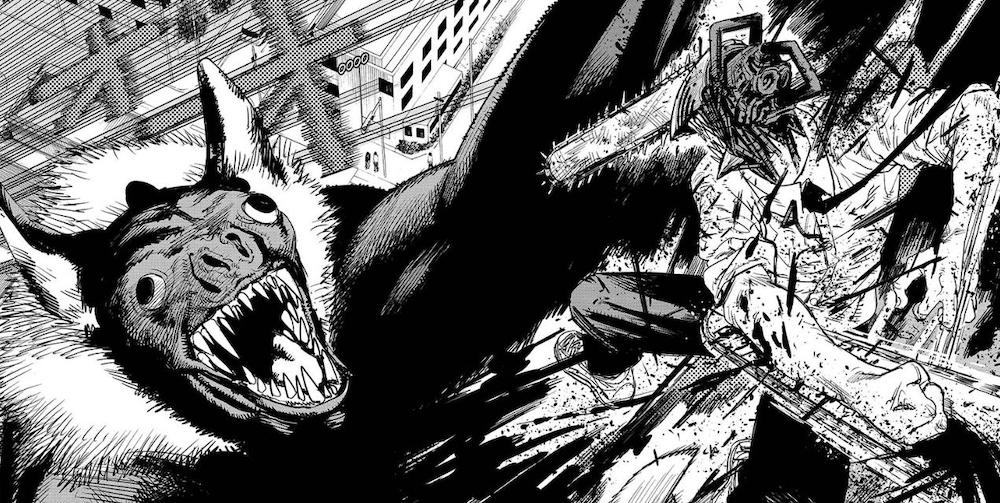
Evan Minto: Chainsaw Man started its run at the tail end of the decade, but it instantly rocketed its way to near the top of my ranking. This series is a Shonen Jump throwback, the kind of rollicking, no-holds-barred action comic that we don’t see nearly enough of anymore. The superpowers are inventive, the characters are a mix of idiots and stone-cold killers, and the whole story has the knuckle-cracking attitude of a Hollywood action blockbuster. All Hail Lord Chainsaw.
5. The Voynich Hotel (2010–2015)
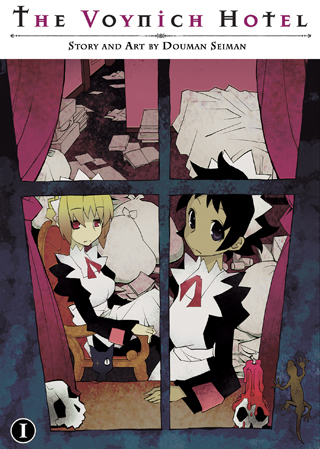
David Estrella: I once bought a stack of doujinshi from Dowman Seiman and that moment sticks out in my mind as one of the few instances of tittering fanboyism I’ve been inflicted with in my long career of being cool and detached from everything. Apologies, but also, I honestly believe they are the best living manga artist out there on the basis of their ideas, aesthetics, and execution. No one else does work like Dowman Seiman and in an age where fictional characters must represent the virtuous ideals of creepy Twitter prudes, I’m glad there’s at least one artist unafraid of being as horny and real as Seiman. The Voynich Hotel is available from Seven Seas.
4. My Lesbian Experience with Loneliness (2016)

Ink: Kabi Nagata’s autobiographical tale reminds me of Hideo Azuma’s Disappearance Diary but focuses on crippling anxiety regarding relationships of self and with others rather than alcoholism and disenchantment. The depression inked in these pages is palpable and, like most good tales about depression, told with a spoonful of humor that makes the prescription go down. The cartoonish character designs are, as the author noted, intentionally cute (non-realistic), and I really dug the basic color scheme. Even though loneliness is an odd concept to a loner, sympathizing with the main character and thus the author is very easy with this book.
3. One Punch Man (2012–present)

Evan Minto: If I had to pick a single manga artist who defined the decade, I just might go with ONE, creator of One-Punch Man and Mob Psycho 100. The Weekly Shonen Jump version of his scrappily drawn webcomic features stunning artwork from Eyeshield 21’s Yusuke Murata, and the two creators’ abilities merge perfectly. One-Punch Man is drawn with the attention to detail of the greatest action comics, and yet ONE and Murata never miss an opportunity to poke fun at the very genre they’re writing for. In a decade that saw the rise of Marvel’s box-office dominance, it’s only fair that one of our top manga spots goes to Weekly Shonen Jump’s very own superhero.
2. An Invitation from a Crab (2014)
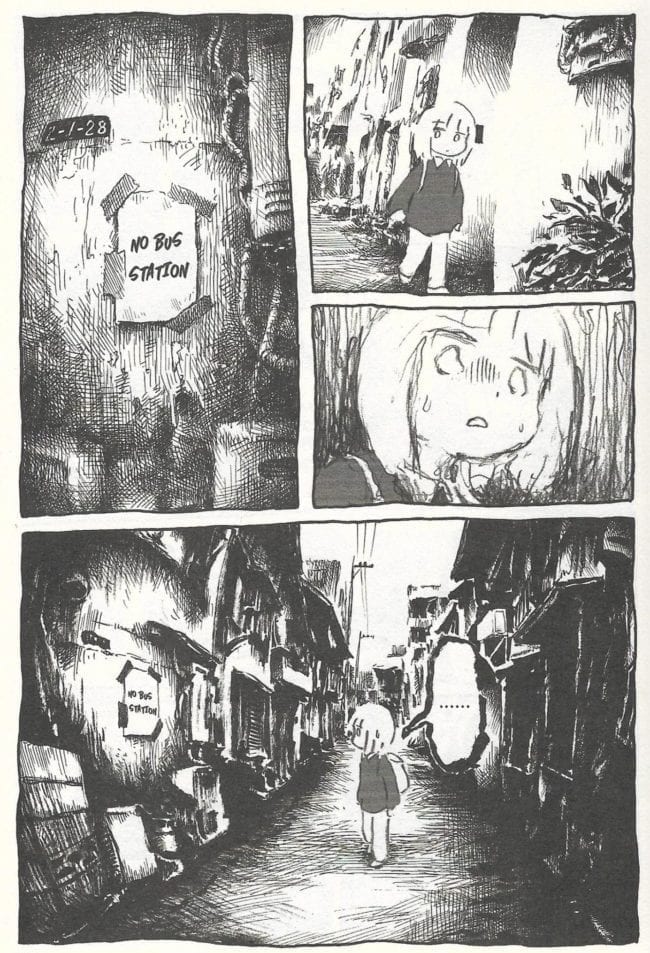
Ink: The human condition is never so palpable than in the hands of the imagination™. In what can almost qualify as a travel diary of the soul, An Invitation from a Crab weaves contemplative, nigh-poetic, prose in-between paralleled episodes of self-discovery as revealed via interactions with the world at large. There’s humor and sadness and everything in-between as befitting the originating structure, but the playfulness with which this comic comes at the reader is disarmament pure and (not so) simple.
1. The Flowers of Evil (2009–2014)
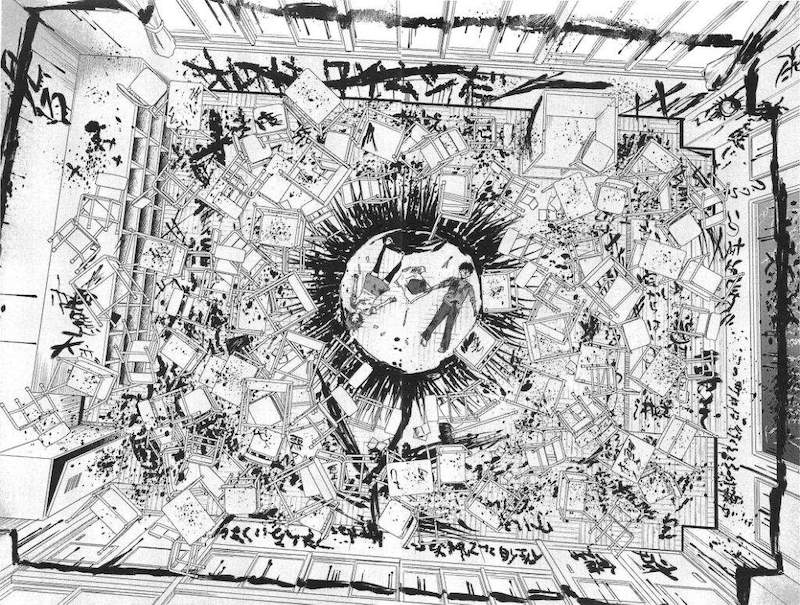
David Estrella: Dedicated to anyone who was an irredeemable embarrassment in high school, The Flowers of Evil won’t make you feel any better about adolescence and pretty much only serves to confirm how bad it all was in reality. I’m not into picking at old wounds quite as much as when I first discovered this manga but it will give certain shitbug readers a chance to reflect on the follies of youth and ask themselves if they’ve really done any proper growing up at all.
